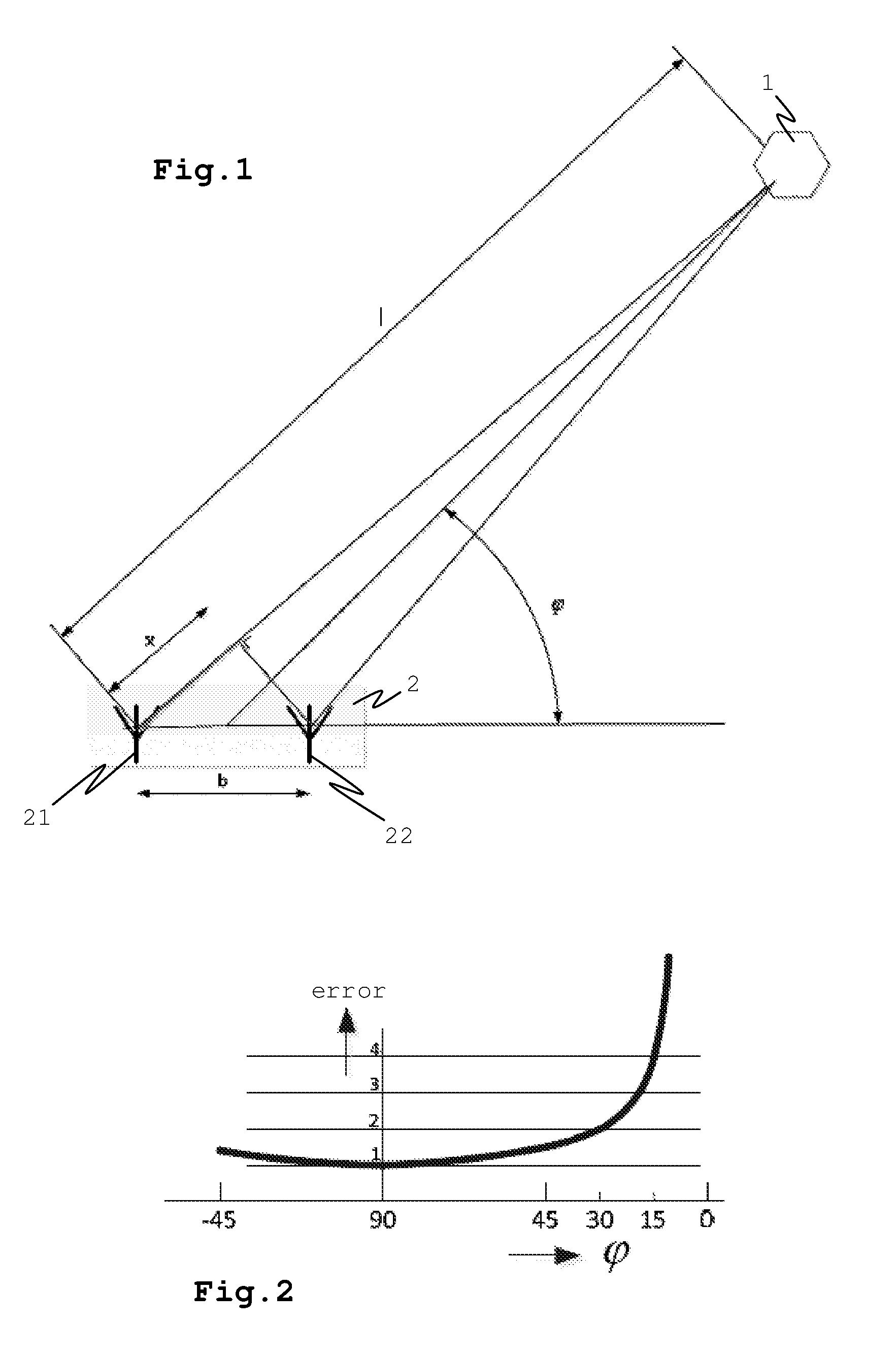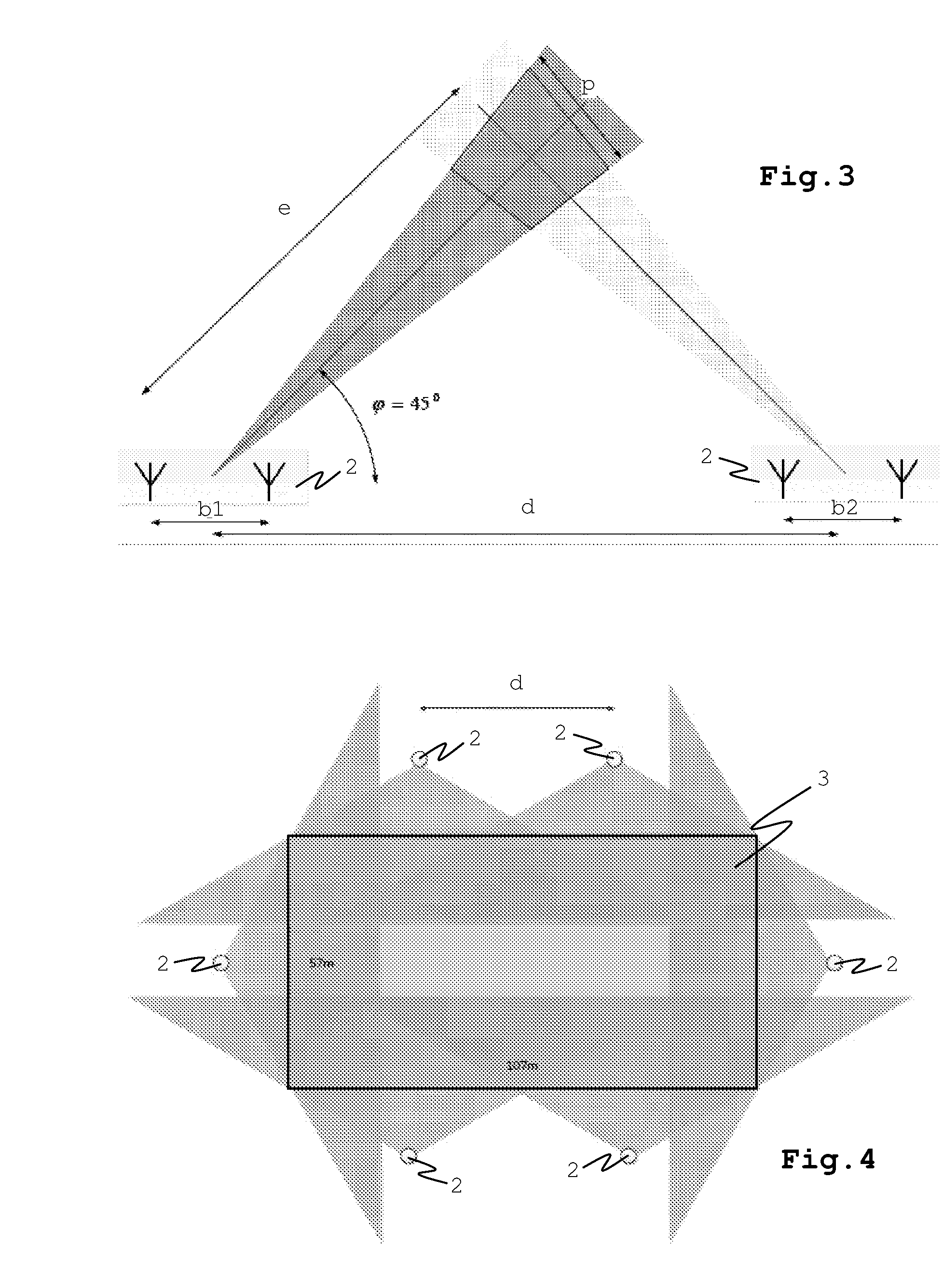Locating a tag in an area
a technology for locating tags and areas, applied in direction finders, instruments, measurement devices, etc., can solve the problems of low accuracy, low accuracy, and inability to provide complete, up to date and accurate knowledge of the whereabouts of nodes, etc., to achieve accurate time difference calculations, lower hardware costs, and accurate time difference calculations
- Summary
- Abstract
- Description
- Claims
- Application Information
AI Technical Summary
Benefits of technology
Problems solved by technology
Method used
Image
Examples
Embodiment Construction
[0036]The following is a description of certain embodiments of the invention, given by way of example only and with reference to the drawings. FIG. 1 shows a basic set up for an estimation of an angle of arrival of a signal originating from a tag 1 at two antennas 21,22 of a receiver 2. The tag 1 transmits an electromagnetic wave or pulse. The signal path 1 from the tag to the left antenna 21 is longer than the path to the right antenna 22, as shown in FIG. 1. This path difference may be measured as a time difference of arrival of the signal at the left antenna 21 and the right antenna 22. The time difference may be converted to a distance difference x as shown in FIG. 1. Under the condition that the distance from the tag 1 to the receiver 2 is bigger than the distance b between the two receive antennas 21,22, the following relation between the angle φ and the distance x holds:
φ=arcos(x / b) [equation 1]
[0037]Inaccuracies in x will result in an error in the angle φ. The following rel...
PUM
 Login to View More
Login to View More Abstract
Description
Claims
Application Information
 Login to View More
Login to View More - R&D
- Intellectual Property
- Life Sciences
- Materials
- Tech Scout
- Unparalleled Data Quality
- Higher Quality Content
- 60% Fewer Hallucinations
Browse by: Latest US Patents, China's latest patents, Technical Efficacy Thesaurus, Application Domain, Technology Topic, Popular Technical Reports.
© 2025 PatSnap. All rights reserved.Legal|Privacy policy|Modern Slavery Act Transparency Statement|Sitemap|About US| Contact US: help@patsnap.com



